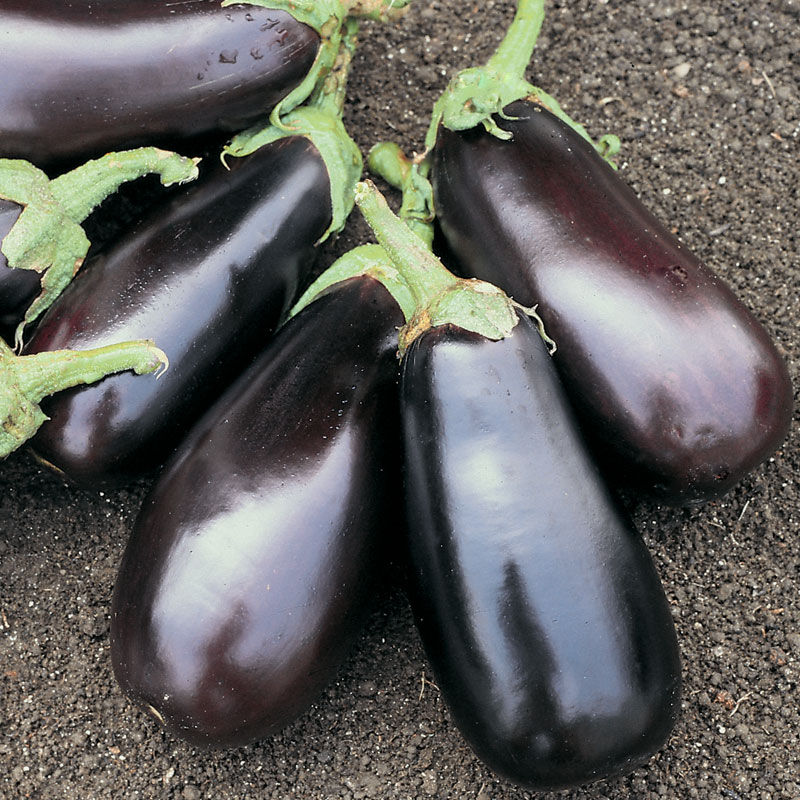Produces deep purple-black, teardrop-shaped fruit. Eggplants are heat loving and damaged by cold. Easy to grow and harvest, fruit should yield to slight thumb pressure when ready and stem should be cut, not broken, to remove fruit. Consistently uniform variety, producing huge yields of shiny black, top-quality, premium, teardrop-shaped fruits measuring 7-in. long by 3-in. across.
15 seeds per packet
Epic Eggplant: 15 Seeds
Sow eggplant seeds a quarter-inch deep in sterile seed-starting mix in small pots; the plants are prone to transplant shock, so avoid starting seed in flats. Use a thermostat-controlled seedling heat mat to maintain a soil temperature of between 75° and 90°F. In this optimal temperature range, especially toward the higher end, the seeds should germinate in one week.
Eggplant seeds should be started under grow lights. The seeds don’t need light to germinate, but once seedlings emerge they will begin to reach for light, and this can cause them to stretch, becoming leggy and weak. Under a grow light, seedlings will develop shorter, sturdier stems. Running a fan gently on the seedlings will prevent damping off disease, a fungus that is fatal to seedlings before they grow their first true leaves. As the seedlings grow, they should be “potted up” to larger containers. When the seedlings begin to approach 4 inches tall, it’s time for a bigger pot.
Eggplants grow into tall, angular plants, so they should be spaced 24 to 36 inches apart. Improve planting holes by mixing in 2 inches of compost to help hold moisture and fertilizer in the soil. Set plants at the same depth at which they are growing in their containers, and water well before spreading mulch.
Plants that receive inadequate water will develop small, bitter fruit. Keep eggplant happy with at least an inch of water per week, and up to two inches during the hottest stretch of summer. If it has rained any less than an inch in a week’s time, make up the difference with supplemental irrigation.
Without a doubt, the No.1 pest of eggplant is the flea beetle — small black or bronze jumping leaf beetles, just an eighth of an inch long. These fast-moving pests chew pin-sized holes in the leaves. Plants are most prone to attack when the leaves are young and tender. By summer, the plants will be big and strong enough to shrug off flea beetle damage, and the pests’ presence then should not raise concerns.
The best natural defense is to cover your plants from the moment you put them in the ground with row cover. You can find it at some garden centers and always online. Another strategy is to plant a trap crop of radishes, which flea beetles prefer over eggplant.

